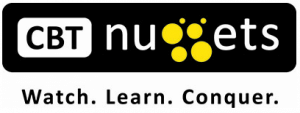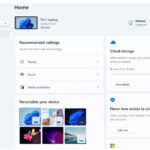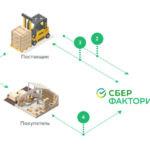Год выпуска: 2011
Производитель: CBT Nuggets
Автор: Greg Shields
Продолжительность: 06:51:26
Тип раздаваемого материала: Видеоурок
Язык: Английский
Стоимость: 1999 рублей
Описание:
Whether you're an experienced virtual administrator or a beginner, this outstanding VMware vSphere 4 training is exactly what you're looking for.
Greg Shields is revered as a virtualization guru. After watching this course you'll have a wealth of insider information at your fingertips on how best to build storage, networking, performance management, backup, and disaster recovery elements into your VMware ESX environment.
Greg's careful step-by-step VMware virtualization training is your best option for building success into your VMware virtual infrastructure -- while furthering your preparation for the VCP examination.
All trademarks and copyrights are the property of their respective holders.
[wpspoiler name="Подробное описание" ]
1. Introduction to VMware, vSphere, and the VCP & VCDX Certifications (00:17:14)
Welcome to this Mastering VMware vSphere training course. Starting out the course is a look at VMware and vSphere, a review of the course, a look at the network that we will be creating throughout the course, and a snapshot of the VCP examination.
2. Understanding VMware's Solution Suite (00:19:21)
Understanding vSphere is one thing, but this product is only one in an entire suite of VMware solutions. In this nugget, you’ll learn about vSphere’s positioning in relation to the other products in VMware’s datacenter portfolio. You’ll also come to understand the core differences between ESX & ESXi as well as between Type I and Type 2 hypervisors (and why one is far better than the other for performance).
3. Installing your First ESX & ESXi Server (00:27:35)
Getting off on the right foot is the installation of your first ESX and ESXi servers. While relatively easy, this process has a few gotchas that you’ll need to know to be successful. This nugget also sets up the core hypervisor infrastructure that will be used throughout the rest of the course.
4. Configuring Networking & Virtual Switches (00:23:11)
Once installed, the first step with any ESX rollout is involved with correctly configuring its network connections. An ESX server tends to use a far greater number of NICs than a traditional physical server. This means that keeping each connection straight is important. In this nugget, you’ll learn about the three types of connections as well as where they make sense to implement.
5. Connecting to & Working with Storage (00:28:00)
Fibre Channel, iSCSI, DAS, NFS: ESX can leverage many different types of storage. And while each storage type might look similar in ESX’s management GUI, they all have their idiosyncrasies. This nugget explores each of the different types of storage, and provides a detailed walk-through of configuring iSCSI storage. Following along with your own environment? Don’t fear: You’ll learn about some free tools that enable easily creating your own shared storage.
6. Configuring VMFS Datastores (00:19:29)
Creating your connections to storage is only the first step. Like with NTFS volumes, the real work happens after that storage is formatted and made ready for use by the OS. The same holds true in VMFS, where you’ll learn about datastores, how they’re created and configured, and how to work with them in operations.
7. Installing vCenter Server (00:20:34)
Getting a single ESX server installed builds you a starter environment for your virtual infrastructure. But to go much beyond one or two ESX servers, you really need added management automation. Get that with vCenter Server. This nugget explores the installation of vCenter Server, as well as its prerequisites and the architectural decisions you’ll need to make prior to dropping its DVD into your drive.
8. Managing vSphere with vCenter Server (00:20:29)
Once installed, vSphere requires a bit of management as you’re ready to begin attaching ESX hosts. Although the vCenter Client looks similar when connected to ESX hosts or a vCenter Server, you’ll find that there’re a far greater number of options to consider. In this nugget you’ll learn about those options as well as the best practices for employing them.
9. Deploying & Managing VMs and vApps in vCenter Server (00:36:01)
Never thought it would take half a course before starting to work with your first virtual machines, eh? Nine videos in, we’ve finally completed the necessary configurations to start deploying and managing VMs and vApps within vCenter Server. This video discusses how to work with VMs, best practices for dealing with their management, and when you might consolidate VMs together to create slightly-more-powerful vApps.
10. Migrating Virtual Machines, VMotion & Storage VMotion (00:15:39)
VMotion is the hot topic when it comes to ESX and vCenter, but you can’t get there with just a few clicks. Actually creating an environment that enables VMotion and Storage VMotion requires additional configuration. This nugget discusses what you need, how to set it up, and how to be successful with the three different types of VMotion that are now available in vCenter 4.0.
11. Managing Clusters, Resource Pools, & Fault Tolerance (00:31:36)
While VMotion gets most of the press for its fantastic capabilities, the real excitement comes in the technologies that wrap around VMotion. Clusters, Resource Pools, Fault Tolerance, HA, and DRS: All of these integrate monitoring data with motioning technologies to create a highly-available infrastructure. If you thought VMotion was cool, you’ll really appreciate the automation that these technologies add to it.
12. Installing & Managing vCenter Server Plug-ins (00:21:06)
vCenter arrives with a highly extensible architecture, enabling you to install plug-ins when needed to add new functionality. This nugget starts a mini-series of vCenter plug-ins by explaining the plug-in architecture within the framework of VMware’s P2V products: VMware Converter and VMware Guided Consolidation. These two tools enable the automated Physical-2-Virtual conversion of virtual machines, adding performance management and actionable intelligence to candidacy and placement decisions.
13. Working with ESX Host Profiles (00:08:23)
Are you suffering under the weight of compliance regulations? Do you need to work overtime to maintain a baseline of configurations? If you do, then you’ll appreciate ESX Host Profiles. This feature creates an automated baseline of a “golden” ESX server, allowing you to compare every other ESX host against its reference profile. The result is a quick-and-easy solution for identifying where configurations aren’t correct, and a boon for large environments who must follow baselines.
14. Working with vCenter Update Manager (00:23:08)
Updating ESX and vCenter was easy when there weren’t many patches. But as the product grew and developed, its required number of patches also grew in size. Thus, the reason for vCenter Update Manager. This tool creates baselines of patches, deploying those which are missing to hosts that need them. Better yet, you can use Update Manager to patch your virtual machines as well, installing patches for OS updates as well as some notable applications. Very powerful this tool.
15. Planning & Executing a vSphere Upgrade (00:11:05)
vCenter Update Manager also works as a solution for upgrading ESX servers as well. While your upgrade activity might be a one-time event, getting it done in a reasonable amount of time requires automation. You get that automation through Update Manager, or the VMware Host Update Utility. You’ll see both in this nugget.
16. Virtual Machine Backup & Restore (00:21:56)
Converting physical machines to virtual improves their backups while it at the same time complicates their backups. When you work with virtual machines, the “perspectives” from where your backups are sourced grow in number. You need to know the best practices for backups, as well as the tools with which to accomplish those backups. In this nugget, you’ll see the VMware Backup Appliance as well as discuss other solutions with greater capabilities.
17. Troubleshooting the vSphere Environment (00:21:26)
Every vSphere environment has its problems, although those problems often have to do with configuration mistakes. There are a set of known problems as well as common solutions that happen within every vSphere environment. Learn about just those solutions in this nugget, where you’ll explore how to track down and fix problems both big and small in your virtual infrastructure.
18. vCenter Server Performance Management & Alarms (00:14:41)
It has been said that performance management is one of the most important parts of virtual infrastructure management. When you consolidate many physical hosts to few virtual hosts, you get greater optimization of resource use; but you also get a greater chance for resource overuse as well. You need to pay attention to your performance through real-time graphs and alerts if you’re to be successful. Learn exactly how in this nugget.
19. Configuring Security & Access Control in vCenter Server (00:15:16)
You’re probably not the only member of your IT department, and as such you’re probably not the only person who will need access to your vSphere environment. Nailing down users, roles, rights, and permissions is easy in vCenter, if you know the tricks. In this nugget, you’ll learn about the two entirely-separate permissions structures that must remain in synch, as well as how to assign permitted activities to users.
20. Working with vNetwork Distributed Switches (00:15:16)
Concluding this course is a special look at the new vNetwork Distributed Switch technology that is now available in vSphere 4.0. Using traditional network switches, you must be absolutely careful to ensure their similar configuration across the many ESX servers in your environment. Or, you can hook them all together with a vNetwork Distributed Switch and let vCenter handle all the work for you. Learn about this powerful new administration tool in this 20th and final nugget
[/wpspoiler]


